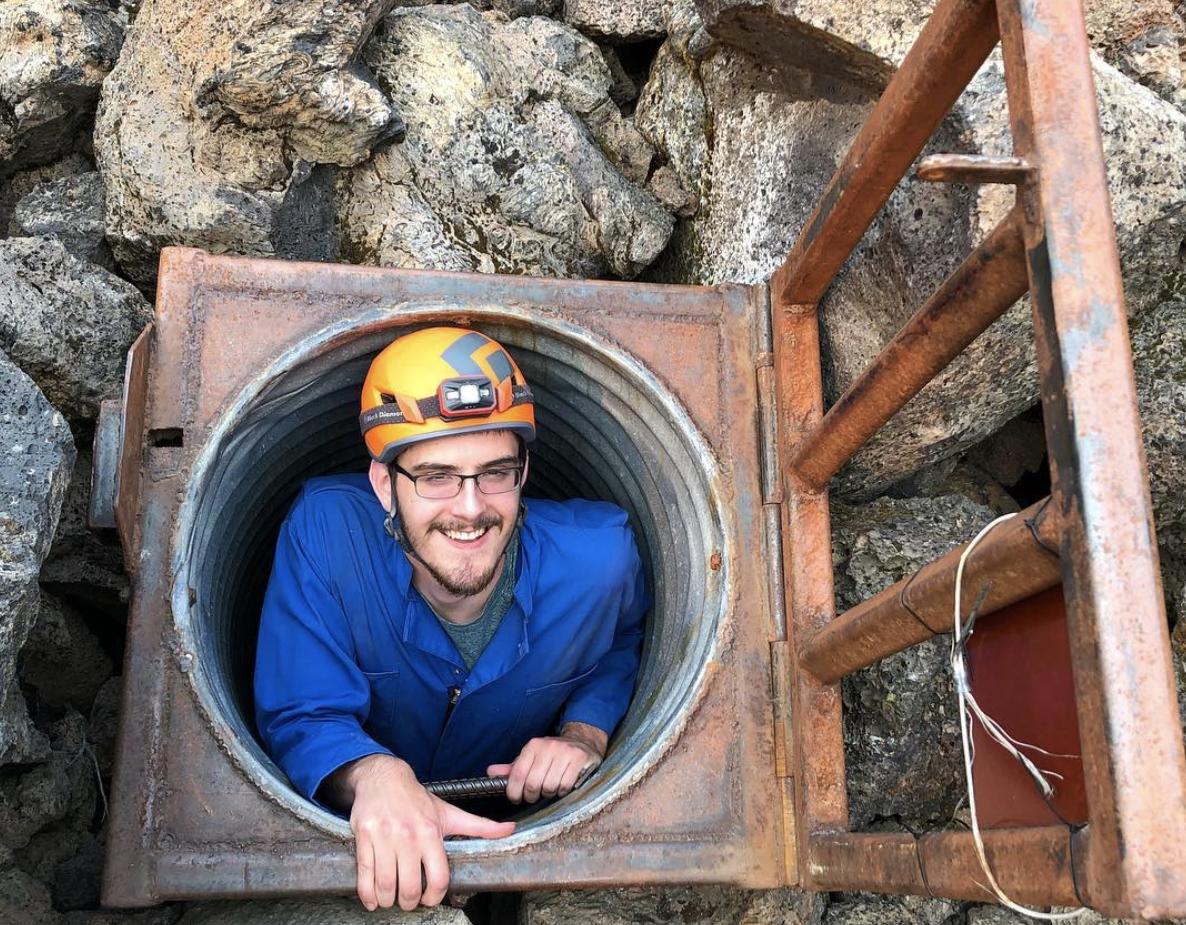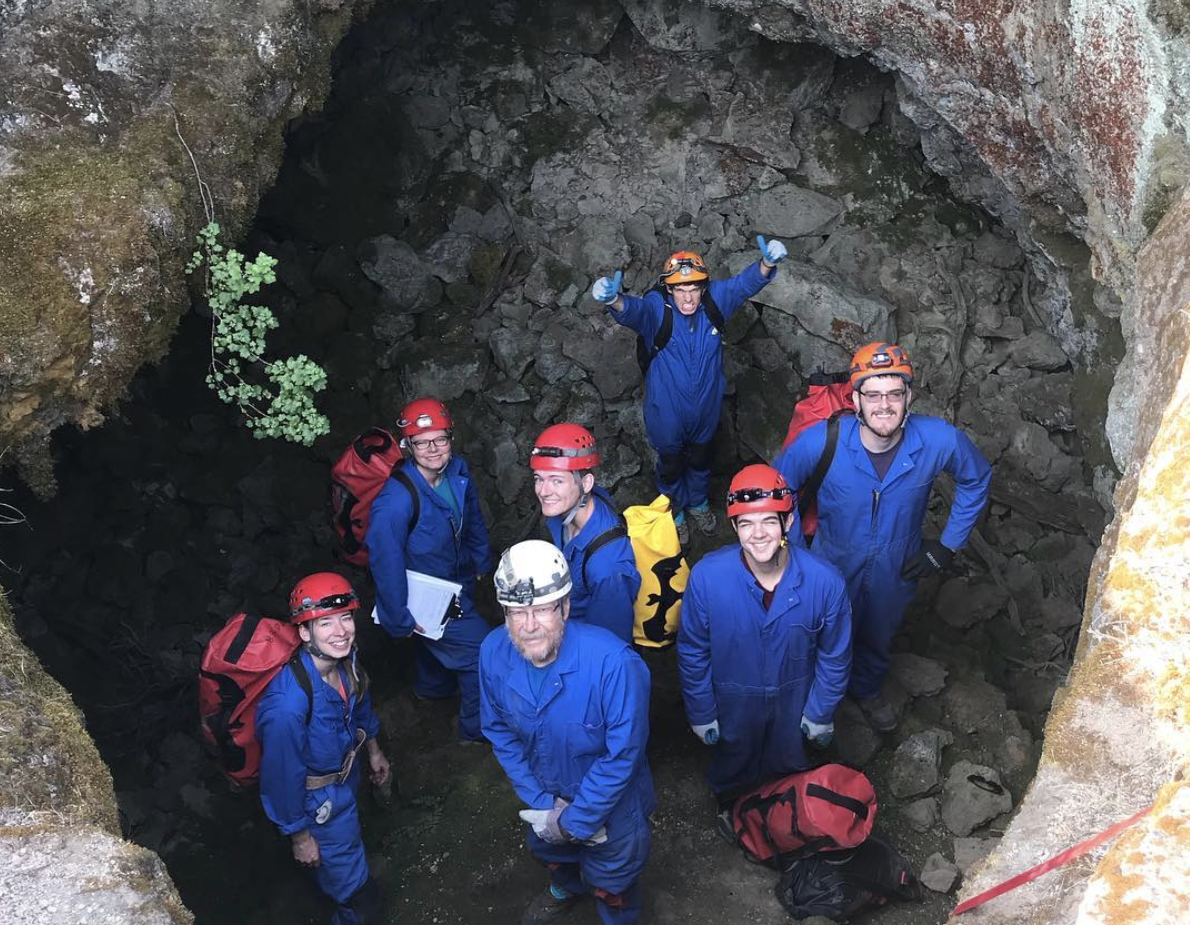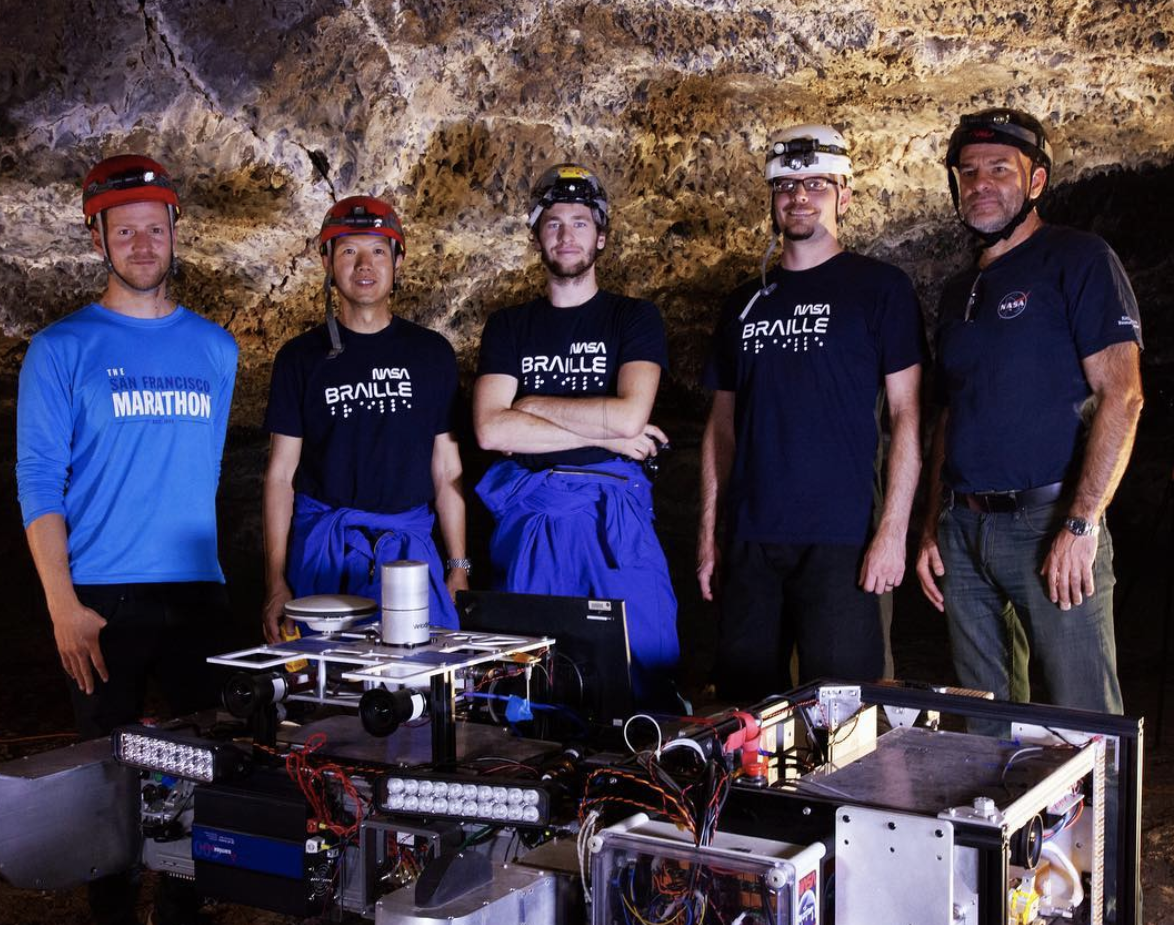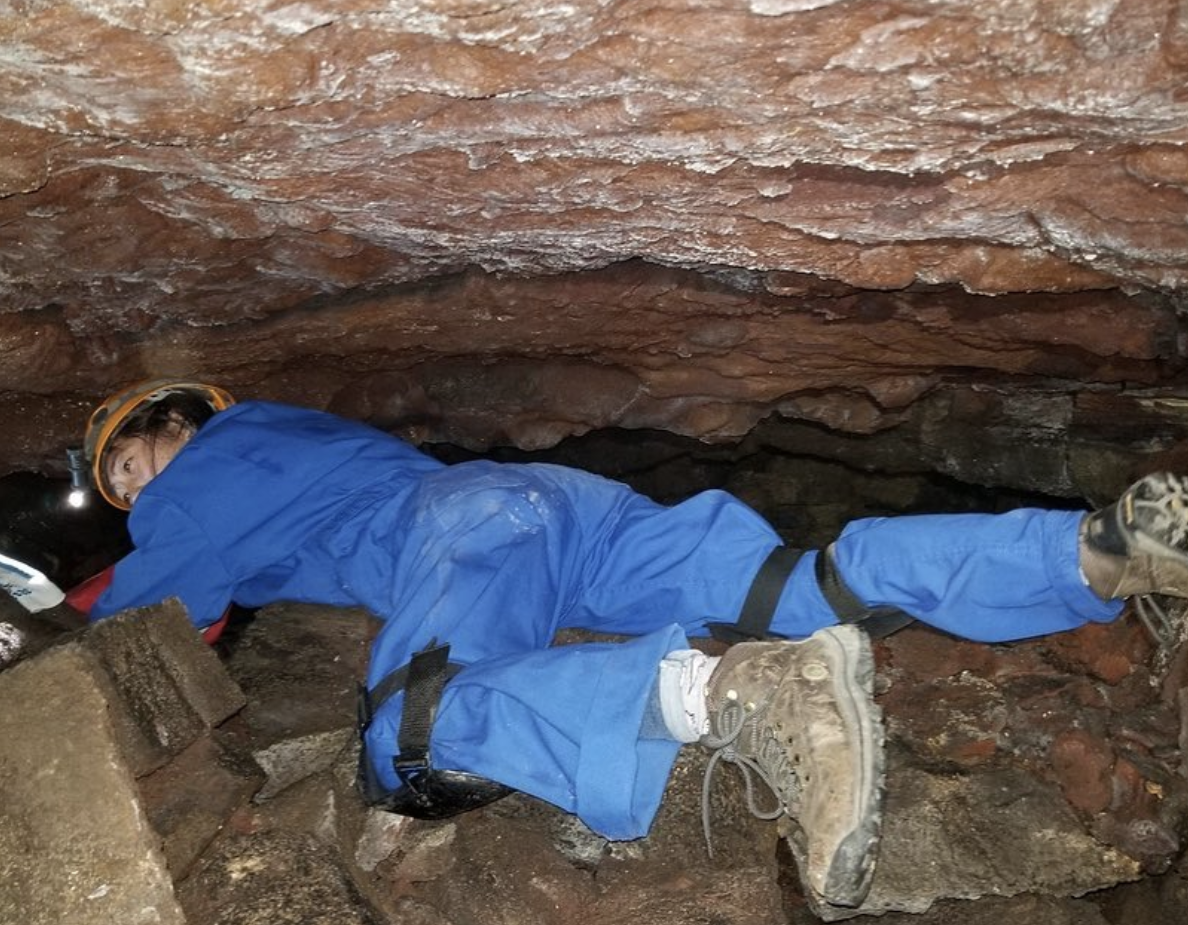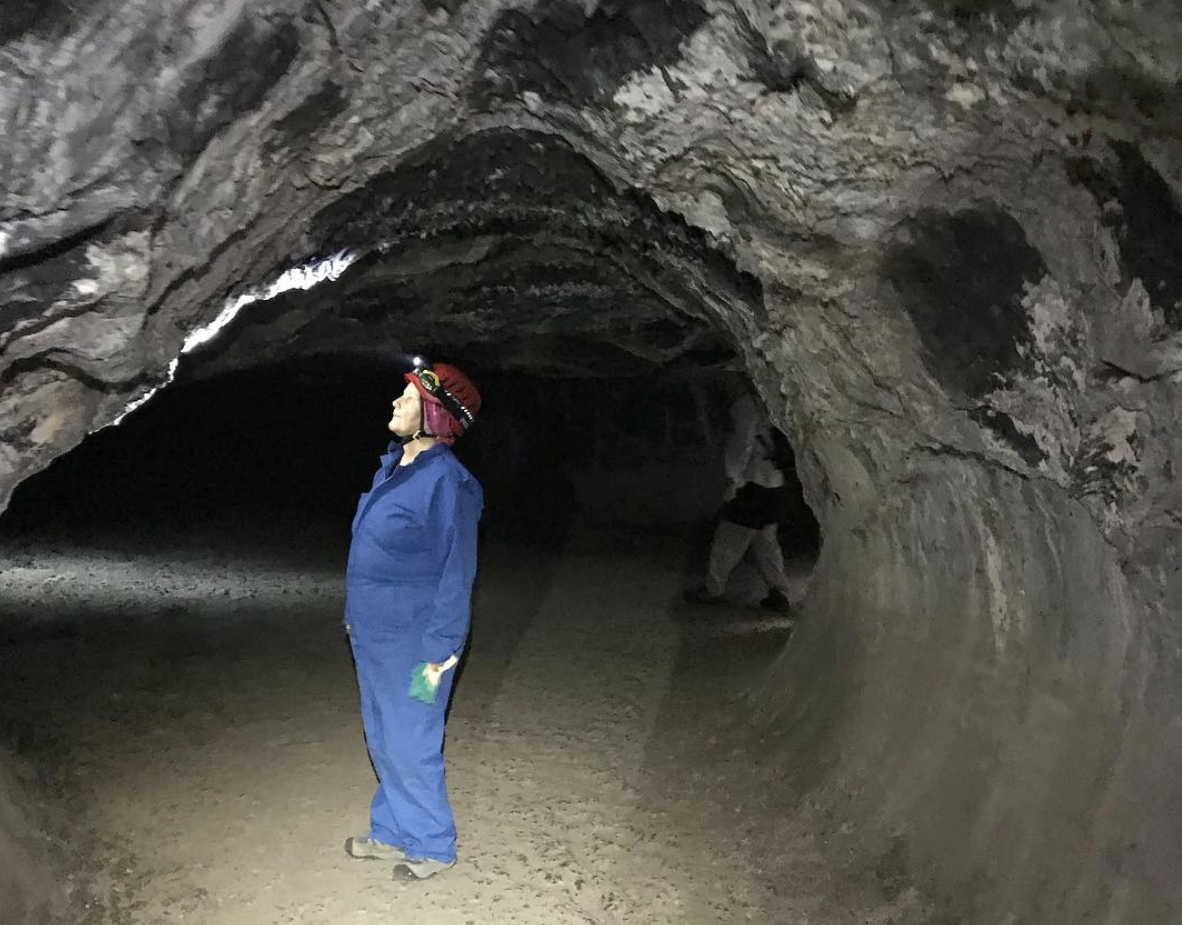Biologic and Resource Analog Investigations in Low Light Environments (BRAILLE)
BRAILLE is a research project funded by NASA’s Planetary Science and Technology through Analog Research (PSTAR) program. The project’s objectives are to characterize microbial life and its life signatures (biological, mineralogical, and chemical) within volcanic caves, demonstrate sub-surface activities using robots in a Mars Mission scenario, and assess the performance of the robot-mounted scientific instruments in low or no light settings to explore, map, and assist in remote astrobiology science.
The question of whether life exists on other planets is one of the most important questions in astrobiology research, and most scientists conclude that microbial life is the most likely alien life form we may discover on other worlds. As harsh surface conditions on Mars would have destroyed any evidence of past microbial life, Martian caves may provide enough shelter to protect remnants of former microbial communities, preserved as minerals or chemical evidence on lava tube walls. The discovery of these and similar “biosignatures” would be exciting evidence of past life on Mars and, possibly, a clue about extant life that could persist in the deeper subsurface of the Red Planet.
Satellites orbiting the Moon and Mars today have revealed more than a thousand candidate volcanic cave entrances on these bodies. We won’t know whether these features are indeed access points to extensive subsurface voids until we visit – or send a robot there to explore. In the meanwhile, we are preparing for a future visit to one of these caves by practicing planetary mission-simulation activities here on Earth, using Lava Beds National Monument (LABE) in Northern California as our analog field environment, with tremendous support from LABE Park Services.
BRAILLE has been a massive collaboration with over a hundred contributors including NASA scientists, NASA Jet Propulsion Laboratory (JPL) engineers, university professors and students, and over 25 interns. It is the first project of its kind to combine the use of legged robot technology, autonomy software, and remote science operations in a volcanic cave, where the robot is operating independently and away from line-of-sight communication with the surface.
In prior field seasons (2017-2019), BRAILLE’s Astrobiology science team members collected samples in 9 LABE caves to analyze in the lab for further investigation and speciation. In addition to taking samples of the microbial communities, the team has investigated the indirect evidence of life and possible biosignatures in the caves, such as “biomineral” features which are likely formed by cave-dwelling microorganisms. The team’s next field season is scheduled for this year and will focus on operational testing and mission simulation, check back this summer for details and pictures of this upcoming season!
In addition to these field expeditions, BRAILLE completed a high-visibility Mars Mission Simulation in the summer of 2018 using the NASA Ames CaveR (also known as K-Rex) rover and a surface-based Mission Operations team of world-respected planetary scientists. BRAILLE has also been pivotal to the publication of several papers, including papers on cave lipid geochemistry, cave-mission advocacy, and several papers published by the JPL team revolving around their work preparing the Spot Robots with their autonomy software.
Find out more about the caves explored by BRAILLE.
Follow NASA BRAILLE on social media to join the journey and keep up to date with our next field season!

